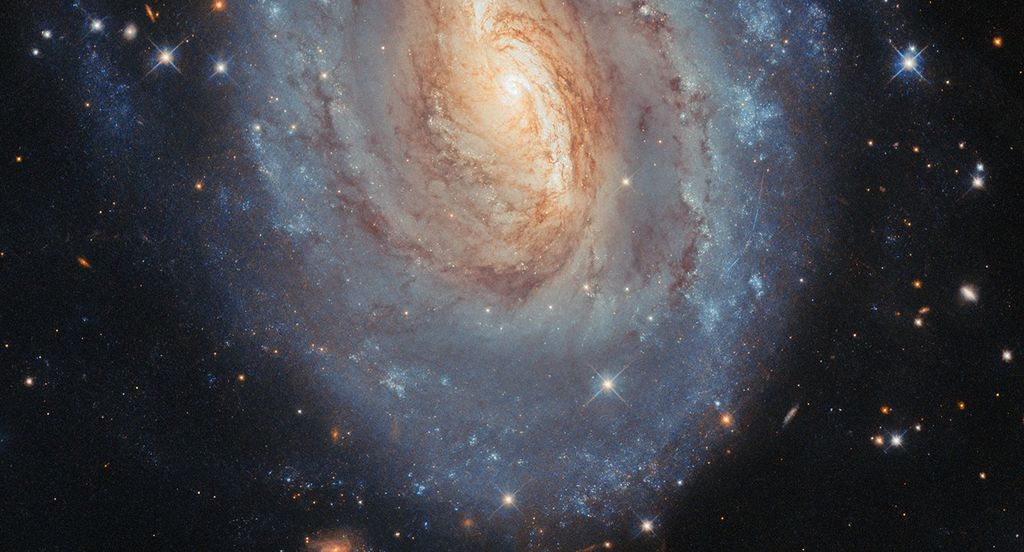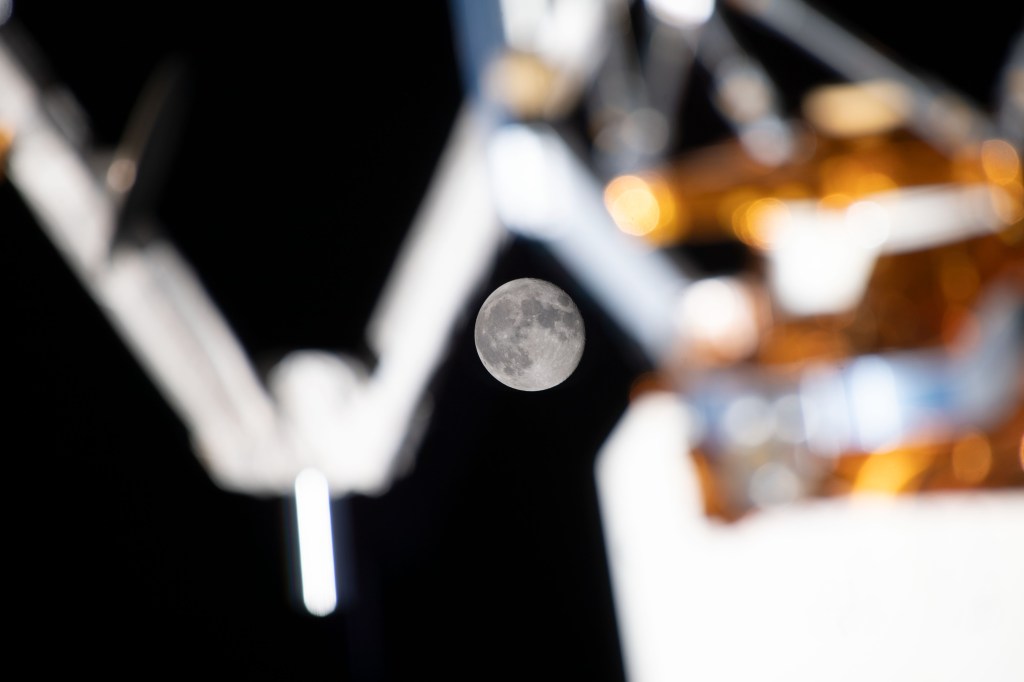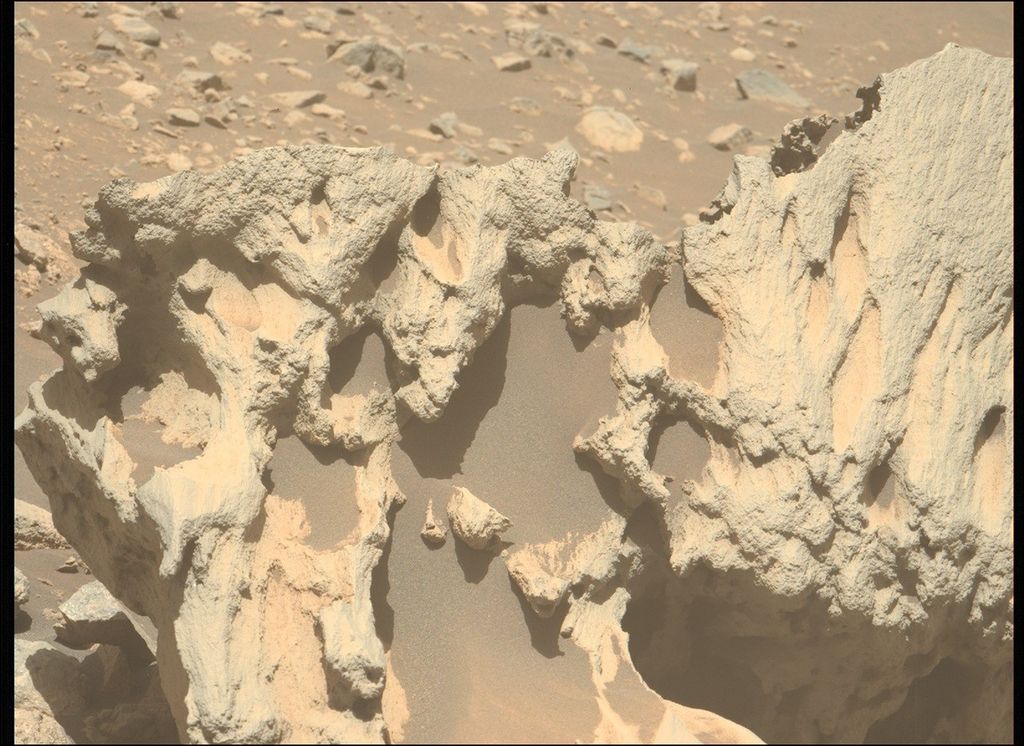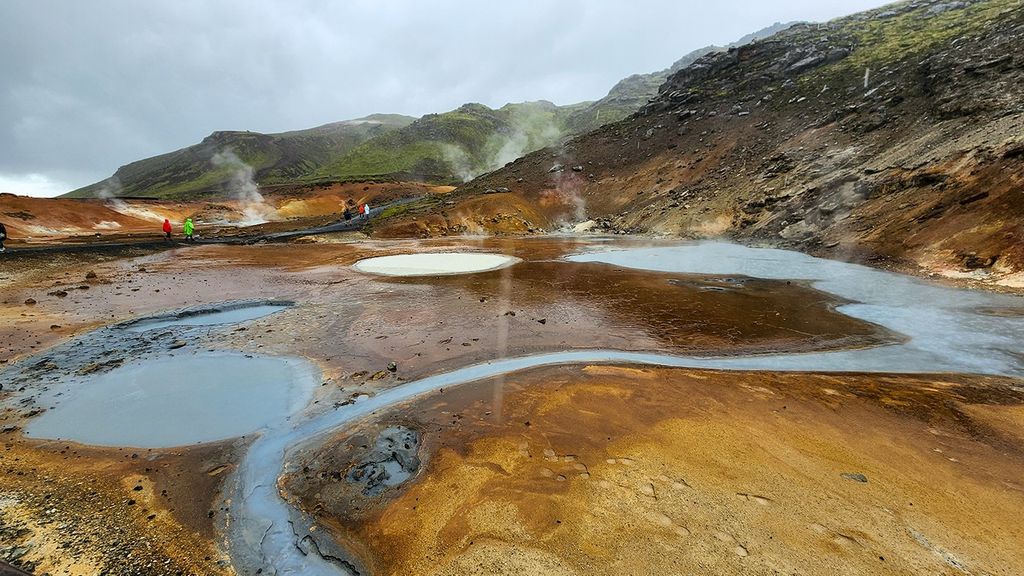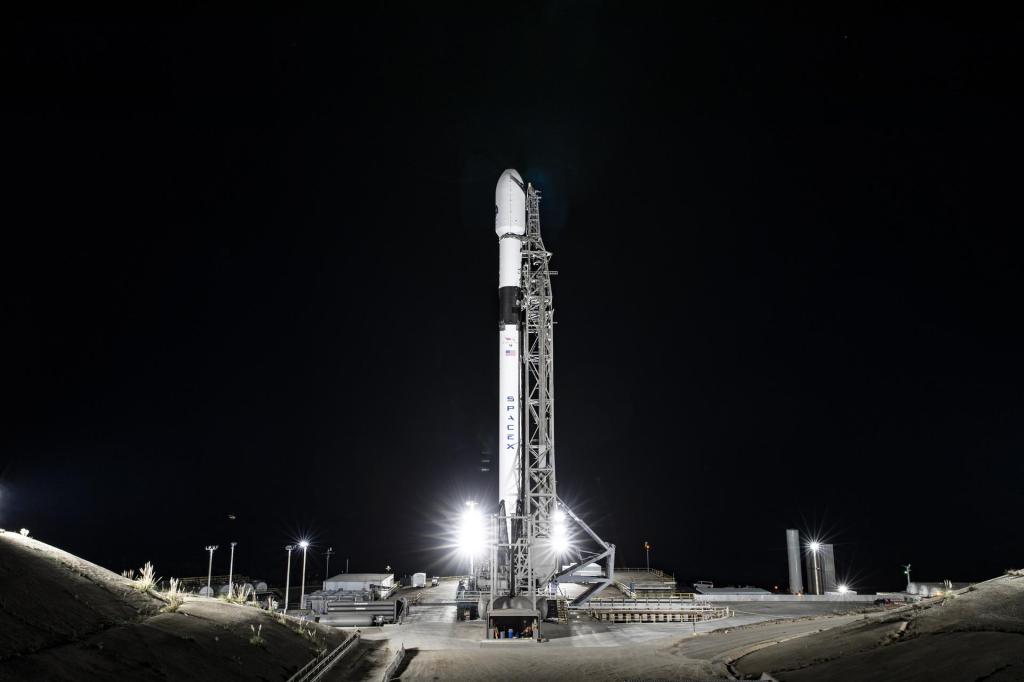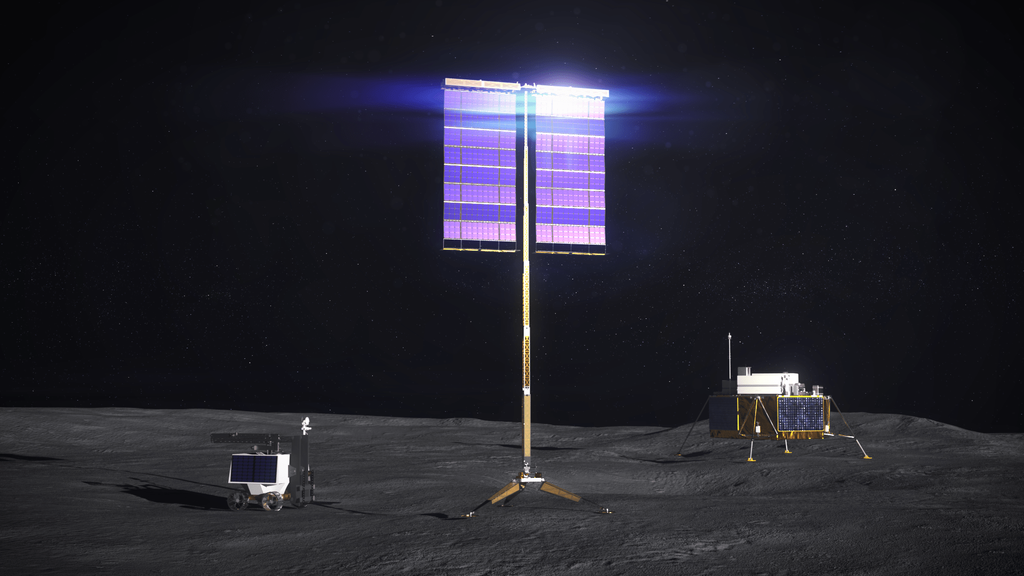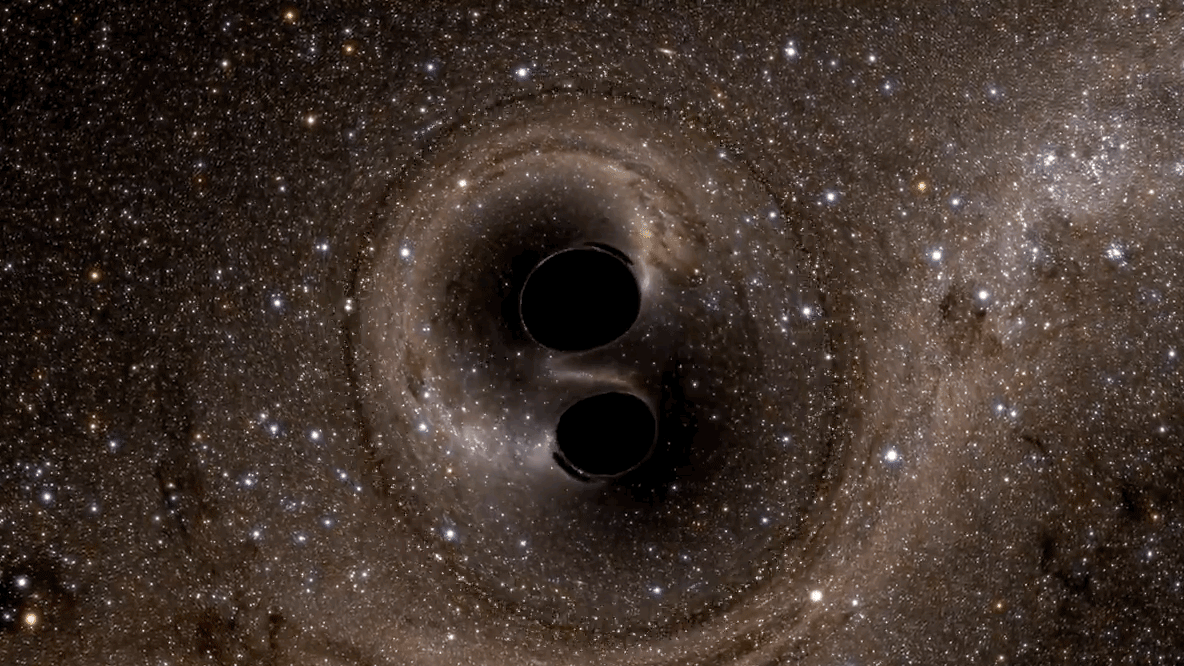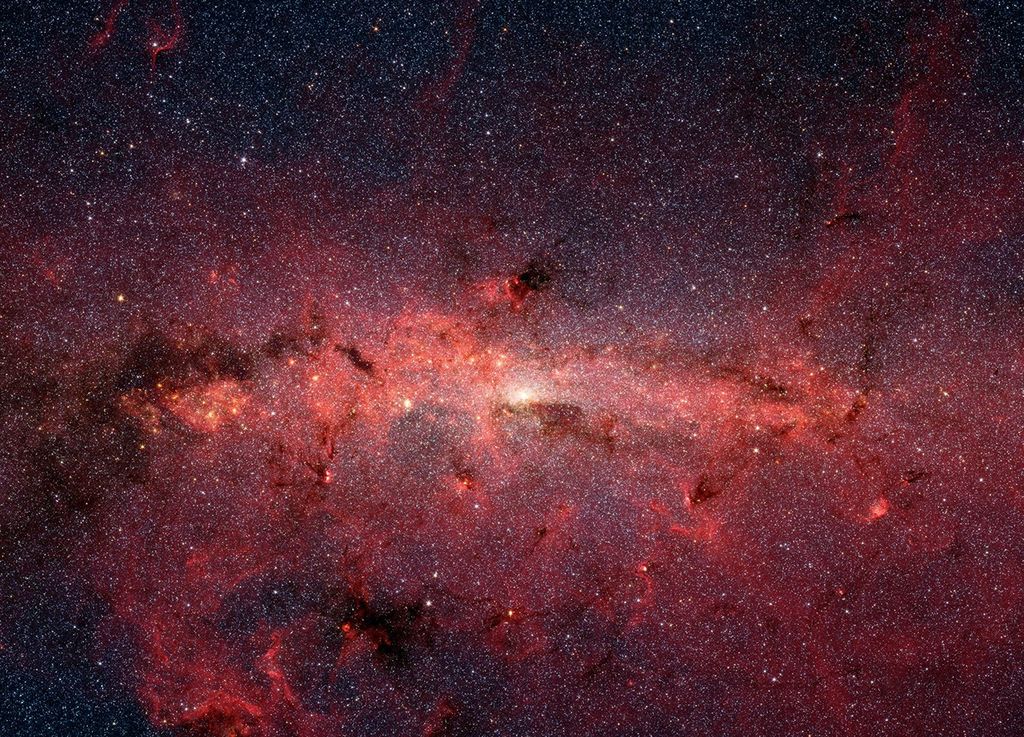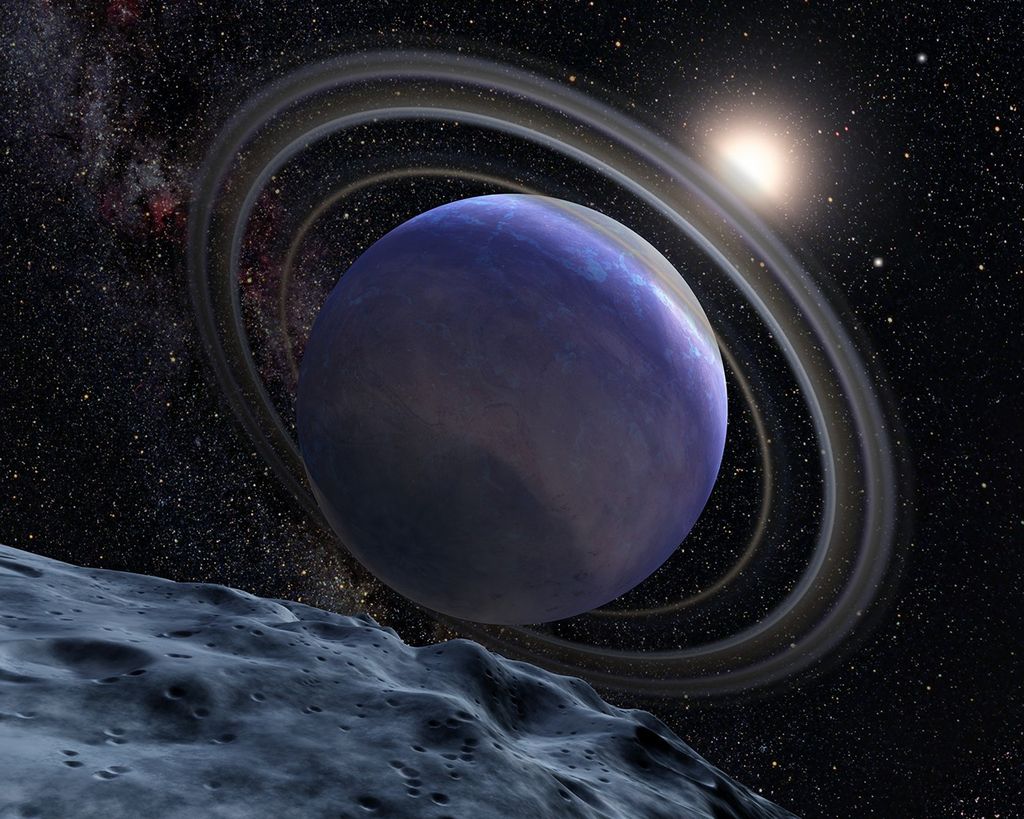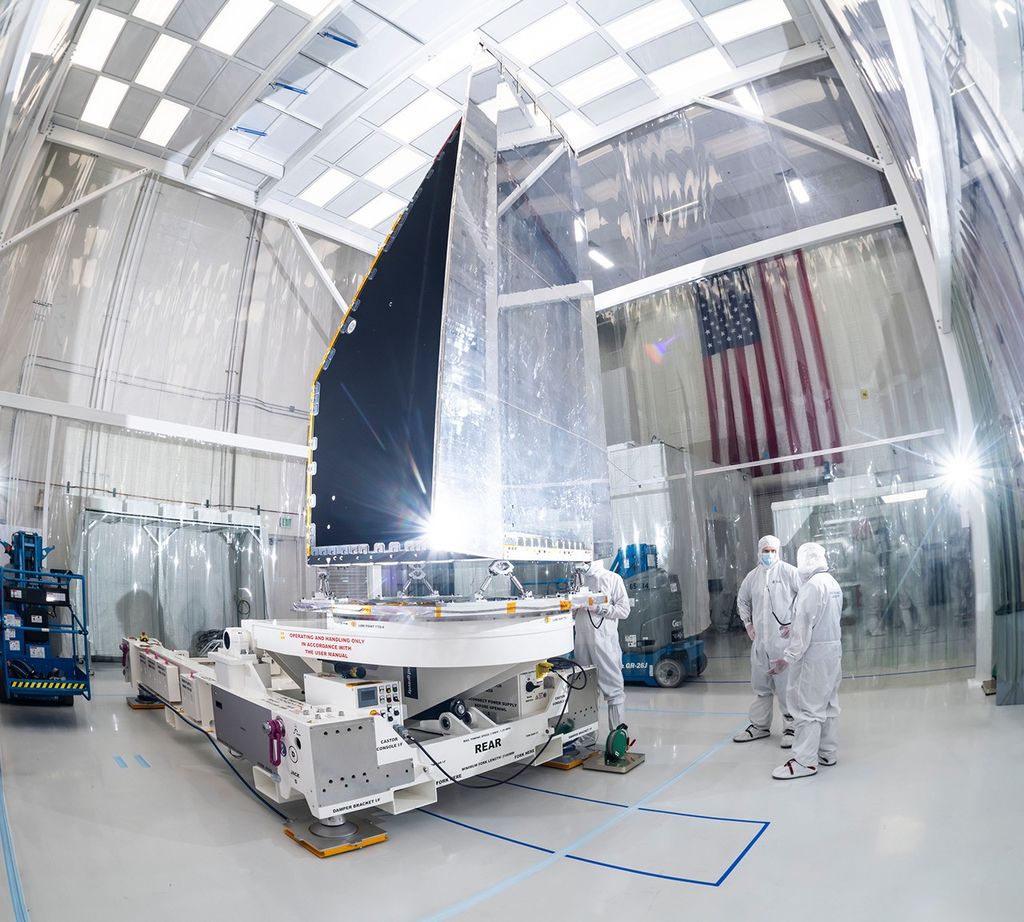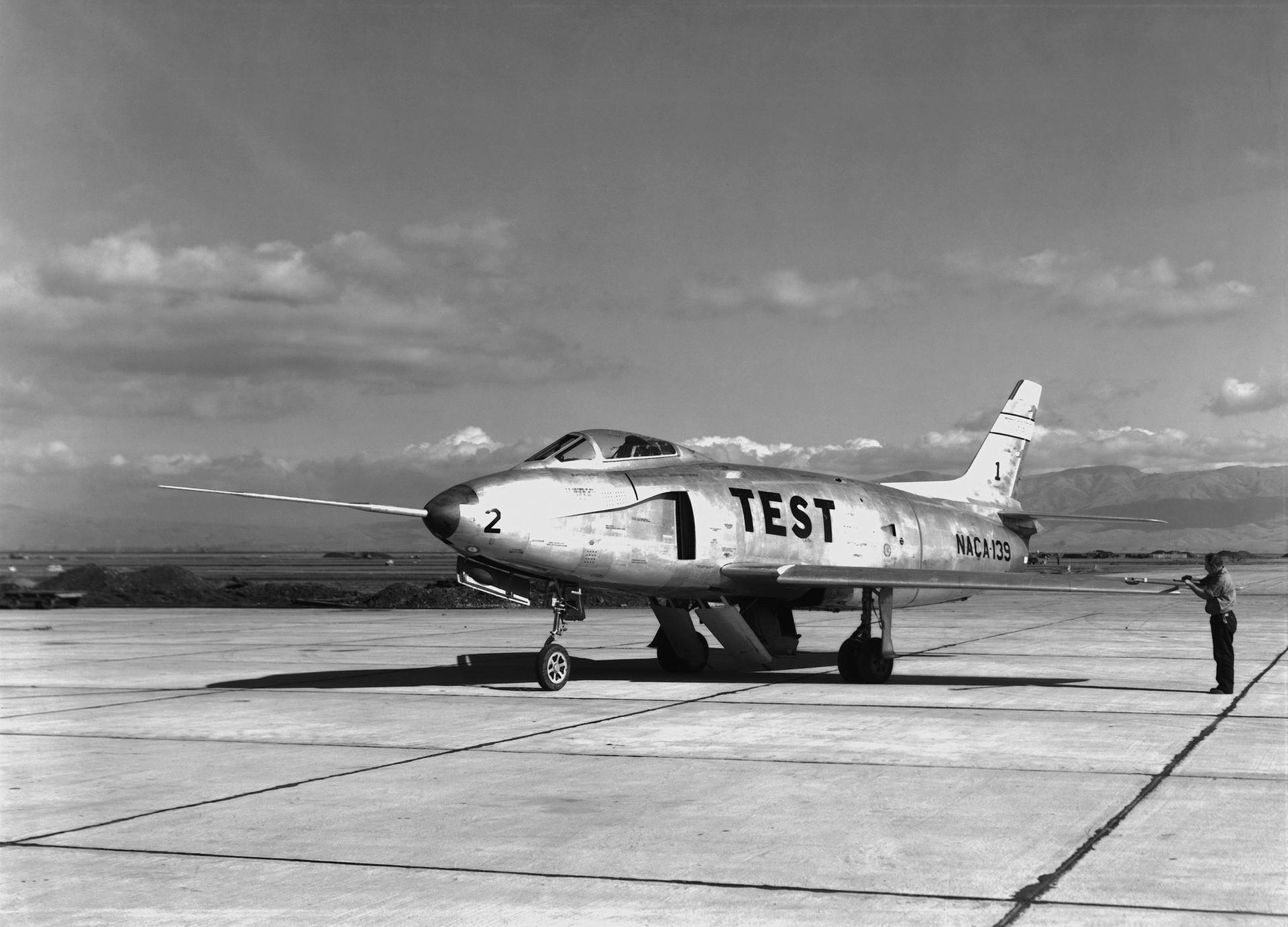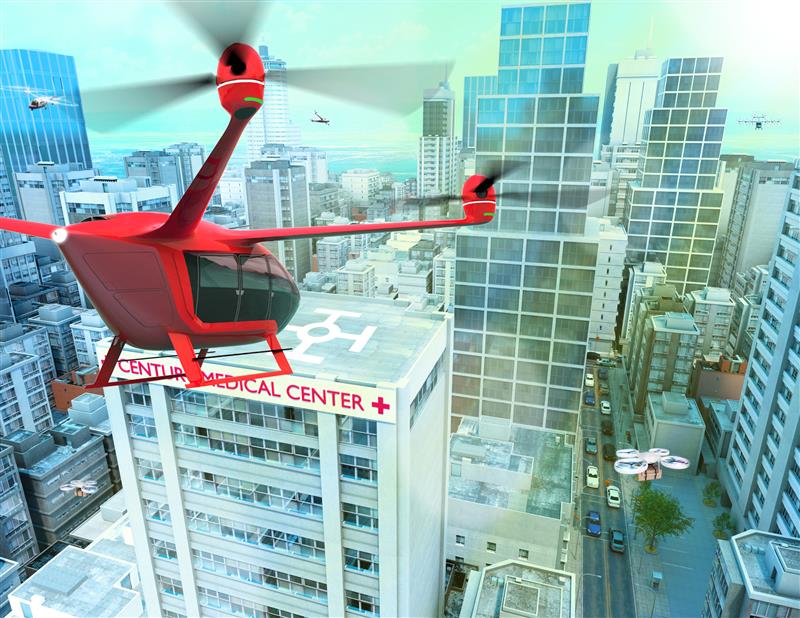1 min read
NASA’s Hubble Takes Close-up Portrait of Jupiter

On April 3, 2017, as Jupiter made its nearest approach to Earth in a year, NASA's Hubble Space Telescope viewed the solar system's largest planet in all of its up-close glory. At a distance of 415 million miles (668 million kilometers) from Earth, Jupiter offered spectacular views of its colorful, roiling atmosphere, the legendary Great Red Spot, and its smaller companion at farther southern latitudes dubbed "Red Spot Jr."
The giant planet is now at "opposition," positioned directly opposite the sun from the Earth. This means that the sun, Earth, and Jupiter line up, with Earth sitting between the sun and the gas giant. Opposition also marks Jupiter's closest point to us, and the planet appears brighter in the night sky than at any other time in the year.
This positioning allowed a team led by Amy Simon of NASA's Goddard Space Flight Center in Greenbelt, Maryland to observe Jupiter using Hubble's Wide Field Camera 3. Hubble photographed exquisite details in Jupiter's atmosphere, as small as about 80 miles (129 kilometers) across.
With its immense and powerful storms and hundreds of smaller vortices, the atmosphere of Jupiter is divided into several distinct, colorful bands, parallel to the equator. These bands, with alternating wind motions, are created by differences in the thickness and height of the ammonia ice clouds; the lighter bands rise higher and have thicker clouds than the darker bands. The bands are separated by winds that can reach speeds of up to 400 miles (644 kilometers) per hour.
Jupiter is best known for the Great Red Spot, an anticyclone that has raged for at least 150 years. This famous storm is larger than Earth. However, the Great Red Spot is slowly shrinking-a trend seen since the late 1800s. The reason for this phenomenon is still unknown. Hubble will continue to observe Jupiter in hopes of solving this riddle.
The images are part of the Outer Planets Atmospheres Legacy program or OPAL. This program provides yearly Hubble global views of the outer planets to look for changes in their storms, winds, and clouds. It began in 2014 with Uranus, and has been studying Jupiter and Neptune since 2015. In 2018, it will begin viewing Saturn.
The team timed the Hubble observation to coincide with when NASA's space probe Juno would be near its closest point to Jupiter, so that scientists could get concurrent observations.
The Hubble Space Telescope is a project of international cooperation between NASA and ESA (European Space Agency). NASA's Goddard Space Flight Center in Greenbelt, Maryland, manages the telescope. The Space Telescope Science Institute (STScI) in Baltimore conducts Hubble science operations. STScI is operated for NASA by the Association of Universities for Research in Astronomy, Inc., in Washington, D.C.
About the Object
- DistanceDistanceThe physical distance from Earth to the astronomical object. Distances within our solar system are usually measured in Astronomical Units (AU). Distances between stars are usually measured in light-years. Interstellar distances can also be measured in parsecs.At the time of observation, Jupiter was 4.458AU (415 million miles or 668 million kilometers) from Earth. The semi-major axis of Jupiter's orbit about the sun is 5.2 astronomical units (483 million miles or 778 million km).
- DimensionsDimensionsThe physical size of the object or the apparent angle it subtends on the sky.Jupiter has a diameter of roughly 88,789 miles (142,984 km) at the equator.
About the Data
- Data DescriptionData DescriptionProposal: A description of the observations, their scientific justification, and the links to the data available in the science archive.
Science Team: The astronomers who planned the observations and analyzed the data. "PI" refers to the Principal Investigator.The image was created from Hubble data from proposal 14756: A. Simon (GSFC), M. Wong (UC Berkeley), and G. Orton (JPL-Caltech). - InstrumentInstrumentThe science instrument used to produce the data.HST>WFC3/UVIS
- Exposure DatesExposure DatesThe date(s) that the telescope made its observations and the total exposure time.Apr. 3, 2017
- FiltersFiltersThe camera filters that were used in the science observations.395 nm, 502 nm, and 631 nm
- Object NameObject NameA name or catalog number that astronomers use to identify an astronomical object.Jupiter
- Object DescriptionObject DescriptionThe type of astronomical object.Planet
- Release DateApril 6, 2017
- Science ReleaseHubble Takes Close-up Portrait of Jupiter
- Credit

These images are a composite of separate exposures acquired by the WFC3 instrument on the Hubble Space Telescope. Several filters were used to sample narrow wavelength ranges. The color results from assigning different hues (colors) to each monochromatic (grayscale) image associated with an individual filter. In this case, the assigned colors are: Blue: F395N (395 nm) Green: F502N (502 nm) Red: F631N (631 nm)
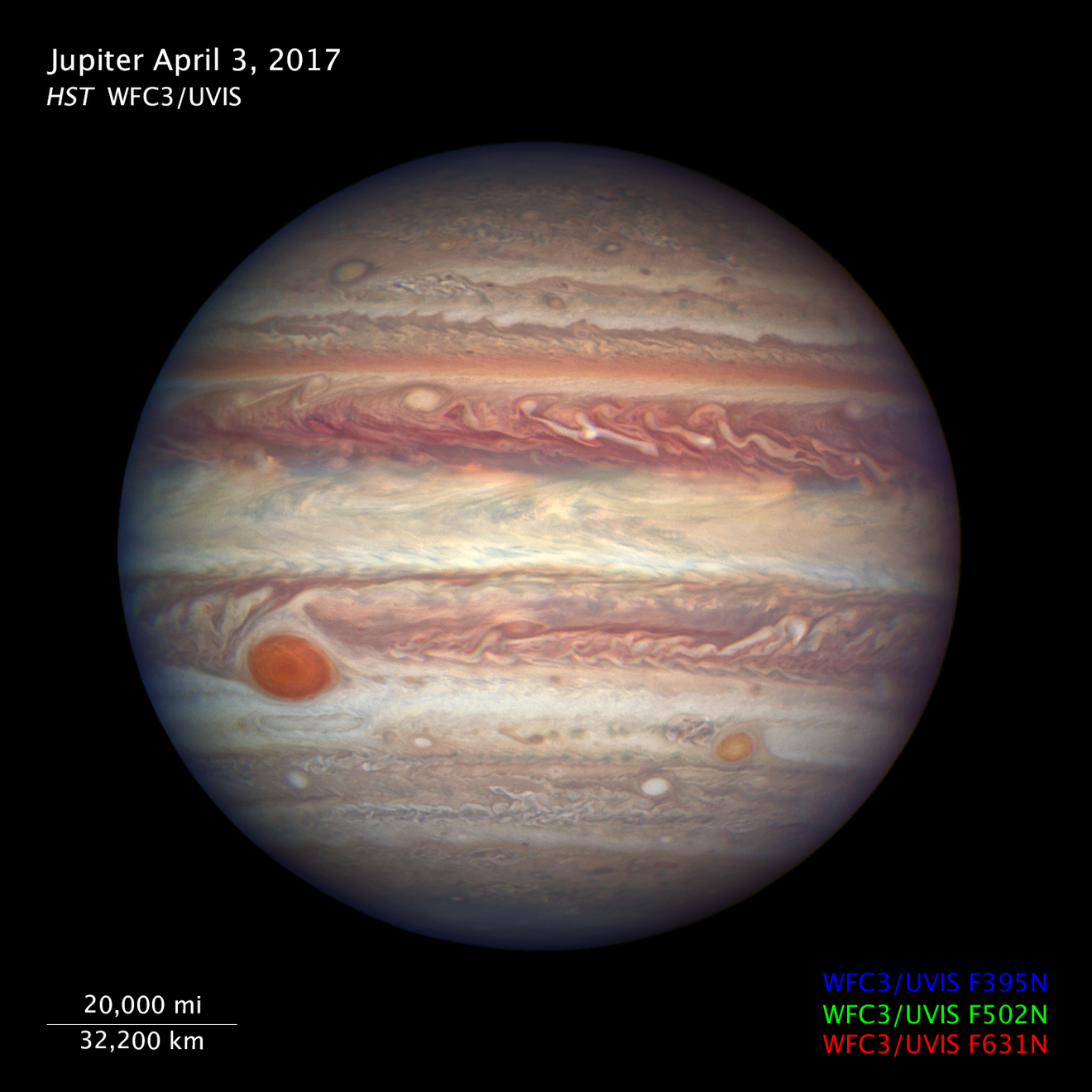
Related Images & Videos
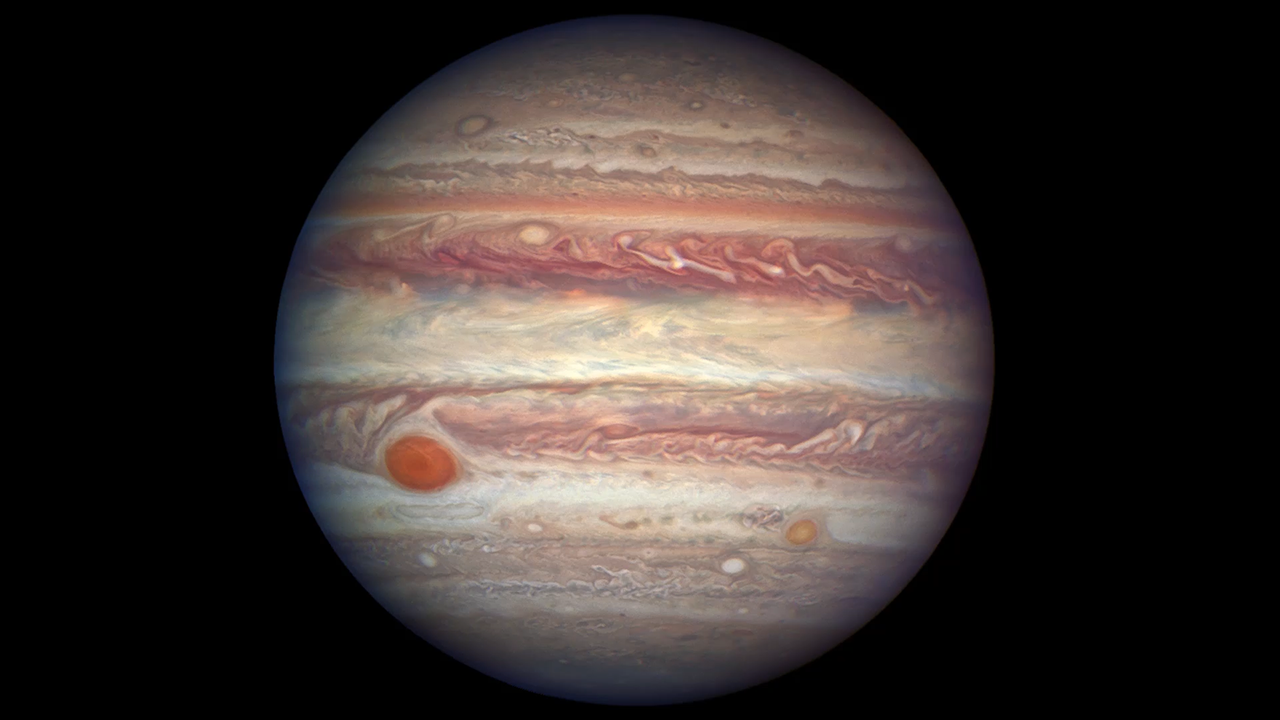
Hubble Observes Jupiter at Opposition
The Hubble Space Telescope observed Jupiter on April 3, 2017 — just days before Jupiter is in opposition on April 7. This new image of Jupiter is part of Hubble's Outer Planets Atmospheres Legacy program, which is one of many ways Hubble provides science on the Jupiter system.
Share
Details
Claire Andreoli
NASA’s Goddard Space Flight Center
Greenbelt, Maryland
claire.andreoli@nasa.gov

